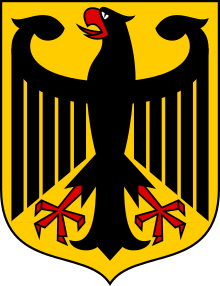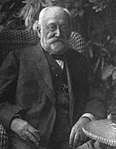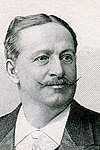German federal election, 1907
|
| |||||||||||||||||||||||||||||||||||||||||||||||||||||||||||||||||||||||||||||||||||||
| |||||||||||||||||||||||||||||||||||||||||||||||||||||||||||||||||||||||||||||||||||||
All 397 seats in the Reichstag 199 seats needed for a majority | |||||||||||||||||||||||||||||||||||||||||||||||||||||||||||||||||||||||||||||||||||||
|---|---|---|---|---|---|---|---|---|---|---|---|---|---|---|---|---|---|---|---|---|---|---|---|---|---|---|---|---|---|---|---|---|---|---|---|---|---|---|---|---|---|---|---|---|---|---|---|---|---|---|---|---|---|---|---|---|---|---|---|---|---|---|---|---|---|---|---|---|---|---|---|---|---|---|---|---|---|---|---|---|---|---|---|---|---|
| Turnout | 84.7% | ||||||||||||||||||||||||||||||||||||||||||||||||||||||||||||||||||||||||||||||||||||
| |||||||||||||||||||||||||||||||||||||||||||||||||||||||||||||||||||||||||||||||||||||
| |||||||||||||||||||||||||||||||||||||||||||||||||||||||||||||||||||||||||||||||||||||
 |
|---|
| This article is part of a series on the politics and government of Germany |
|
| Foreign relations |
|
|
Federal elections were held in Germany on 25 January 1907.[1] Despite the Social Democratic Party (SPD) receiving a clear plurality of votes, they were hampered by the unequal constituency sizes that favoured rural seats.[2] As a result, the Centre Party remained the largest party in the Reichstag after winning 105 of the 397 seats, whilst the SPD won only 43.[3] Voter turnout was 84.7%.[4]
Results
| Party | Votes[a] | % | Seats | +/– |
|---|---|---|---|---|
| Social Democratic Party | 3,259,000 | 29.0 | 43 | –38 |
| Centre Party | 2,179,800 | 19.4 | 105 | +5 |
| National Liberal Party | 1,630,600 | 14.5 | 54 | +3 |
| German Conservative Party | 1,060,200 | 9.4 | 60 | +6 |
| Free-minded People's Party | 736,000 | 6.5 | 28 | +7 |
| German Reich Party | 471,900 | 4.2 | 24 | +3 |
| Polish Party | 453,900 | 3.9 | 20 | +4 |
| Free-minded Union | 359,300 | 3.2 | 14 | +5 |
| Anti-Semites | 248,500 | 2.2 | 16 | +5 |
| German People's Party | 138,600 | 1.2 | 7 | +1 |
| German Agrarian League | 119,400 | 1.1 | 8 | +4 |
| Economic Union | 104,600 | 0.9 | 5 | New |
| Alsace-Lorraine Party | 103,600 | 0.9 | 7 | –2 |
| German-Hanoverian Party | 78,200 | 0.7 | 1 | –5 |
| Bavarian Peasants' League | 75,300 | 0.7 | 1 | –3 |
| Danish Party | 15,000 | 0.1 | 1 | 0 |
| Others | 219,100 | 1.9 | 3 | 0 |
| Invalid/blank votes | 50,100 | – | – | – |
| Total | 11,303,500 | 100 | 397 | 0 |
| Registered voters/turnout | 13,352,900 | 84.7 | – | – |
| Source: Nohlen & Stöver, DGDB | ||||
a Figures for votes are rounded.[4]
References
This article is issued from
Wikipedia.
The text is licensed under Creative Commons - Attribution - Sharealike.
Additional terms may apply for the media files.




_02.jpg)
